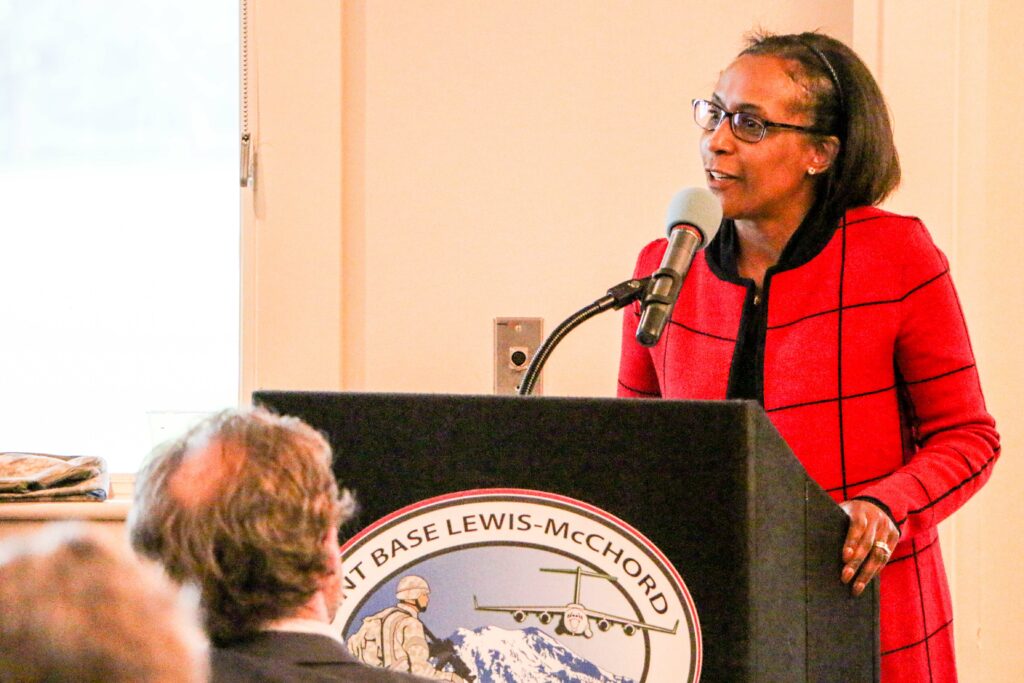Home
South Sound Military and Communities Partnership (SSMCP)
Identity
SSMCP is a partnership of more than 50 members: cities, counties, tribes, nonprofits, corporations, organizations, and Joint Base Lewis-McChord.
Vision
We seek to bridge military and civilian communities through innovative and flexible partnerships and performing mutually beneficial work in the South Sound.
Mission
We aim to foster communication and mutual benefit by coordinating amongst our partners on complex issues affecting the military and civilian communities.
Active Projects
SSMCP takes on projects to advance infrastructure and regional improvements that support military readiness and the communities neighboring Joint Base Lewis-McChord.
SSMCP projects encompass land use, infrastructure, traffic, community relations, child care, housing affordability, and economic development.
Current Projects Include:
- JBLM North Clear Zone
- JBLM Growth Coordination Plan
- JBLM Joint Land Use Study
- I-5 Mounts Road to Tumwater
- 2022 JBLM Workforce Survey
JBLM Military Members and Affiliates Encouraged to Participate in 2022 JBLM Workforce Survey
FOR IMMEDIATE RELEASE
July 27, 2022
MEDIA CONTACT
Maria Tobin, Program Coordinator, South Sound Military and Communities Partnership
mtobin@cityoflakewood.us (253) 241-7854
Lakewood, Wa. — South Sound military affiliates are encouraged to participate in the South Sound Military and Communities Partnership’s Joint Base Lewis-McChord 2022 JBLM Workforce Survey. Survey questions focus on demographics and the needs and preferences of service members and their families. First conducted in 2011, this survey provides data that is used to inform government organizations at the local, state, and national levels about a wide range of topics from housing costs, childcare, and the perception of public safety.
Servicemembers and their affiliates are strongly encouraged to participate in this JBLM Survey because it provides better data for all levels of government to understand the needs of our JBLM affiliates to support them better. All participants will be entered to win Visa Gift Cards ranging from $100-$500 randomly selected participants. To be eligible, all survey questions must be answered and an email or mailing address must be provided.
As of 2021, there were approximately 54,355 active duty service, civilians, and contractors supporting JBLM, with nearly 40K retirees. JBLM service members and affiliates were invited to take the six-minute JBLM Workforce Survey offered online and through email.
Find the survey here: https://www.surveymonkey.com/r/577NX6P
The deadline for responses is August 1, 2022. More information is available on the South Sound Military and Communities Partnership website by clicking this link.
I5 Mounts Road to Tumwater
https://www.thenewstribune.com/news/local/article258153003.html
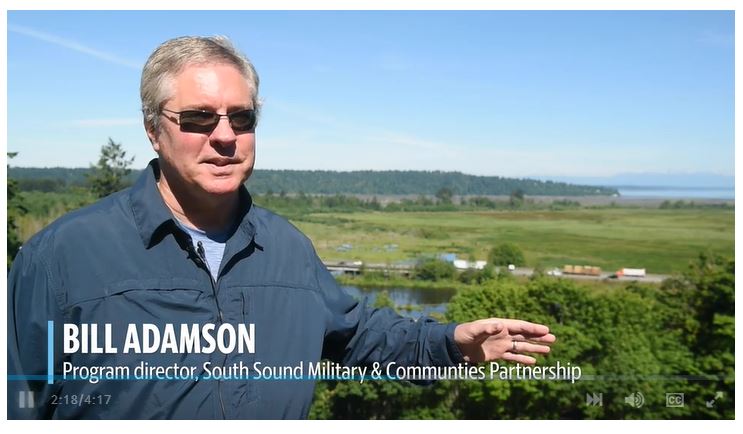
Legislative Priorities
Maintain Active State support for Military Affairs in Washington
SSMCP believes in a strong commitment from the State in support of military affairs. Funding of the Washington Military Alliance (WMA) with direct reporting to the Governor, in recognition of the economic benefit realized by the State and private sectors due to our military’s presence. WMA works to retain and expand military missions in Washington State, thereby increasing defense spending and investment in our state. The current regional economic impact from JBLM alone is between $8.3 and $9.2 billion annually.
Passing legislation to establish a Military Benefit Zone economic development tool for communities surrounding major military installations to use toward infrastructure improvements.
Increasing access to quality affordable child care for all WA residents, including service members, veterans, and their families.
Supporting the Washington State Arts Commission in Healing Arts efforts focused on Active Duty Military and Veterans.
Support Partner Projects in the Region
These projects include but are not limited to:
- Widening of DuPont/ Steilacoom Road from Integrity Gate to Exit 119 on I-5
- Addressing the at grade rail crossing near the JBLM main gate entrance at Exit 120
- Timely completion of the already funded SR 510 Yelm Loop
- Support the capital budget request for the Lacey Veterans Services Hub.
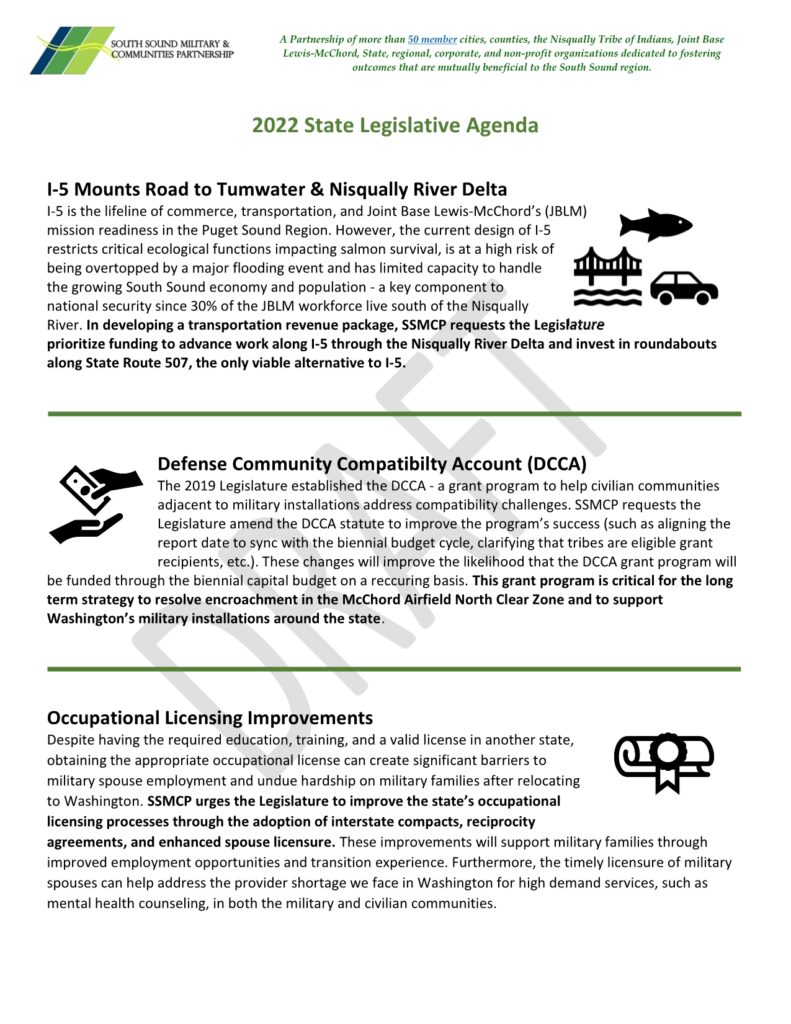
Support Military & Civilian Compatible Land Use
SSMCP was founded on and strongly agrees that collaborative partnerships are vital in identifying and resolving existing land use conflicts and preventing potential future land use conflicts. SSMCP supports joint land use strategies that do not usurp local control. Specifically, SSMCP supports:
- Allocating state resources to assist with resolution of compatible use issues through the establishment of a military base land use compatibility grant program and/or direct appropriations from the state’s capital budget
- Designating military installations as regional centers for the purposes of regional and transportation planning
- Coordination with and investment in military-community organizations such as SSMCP, Forward Fairchild, KEDA, Greater Spokane, Inc., etc.
Shared Press Releases
Strickland Champions 17 Defense Budget Wins into Law for Military Families & Service Members

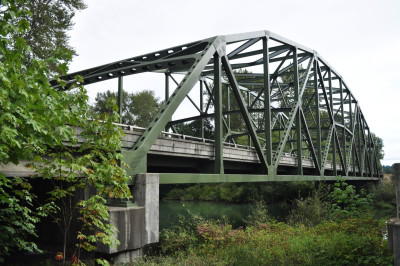

Membership Information
JOIN SSMCP TODAY:
SSMCP Staff
- SSMCP Program Director, Bill Adamson
- SSMCP Program Coordinator, Maria Tobin
Who may join SSMCP?
Anyone with objectives that align with SSMCP may be eligible for membership.
Why was SSMCP formed?
Formed in 2011 by a memorandum of agreement among communities and JBLM advocates who wanted to provide a consolidated regional voice for issues.
How is SSMCP funded?
SSMCP is funded by membership dues and grants to include support from the Office of Economic Adjustment.
Does SSMCP have paid staff?
Yes. Two full-time paid staff with military service backgrounds are funded by SSMCP.
Is SSMCP a non-profit?
No. Executive Leadership Team member, City of Lakewood, serves as a fiduciary agent. The City also provides SSMCP with advice and legal counsel. This cost savings on organizational costs is not possible if SSMCP was a non-profit. Staff does make the clear designation of representing SSMCP – not the City of Lakewood.
CURRENT MEMBERSHIP
2021 Co-Chairs:
Tye Menser, Thurston County
Don Anderson, Lakewood
Executive Leadership Team:
- John Caulfield, Chair, City of Lakewood
- Scott Spence, Vice-Chair, City of Lacey
- Don Anderson, Pierce County
- David Fullmer, JBLM Headquarters
Steering Committee:
- Larry Sanchez/Joe Cushman, Nisqually Tribe
- Jennica Machado, Thurston County
- Andy Takata, DuPont
- Kierra Phifer, Puget Sound Energy
- Rosa McLeod, Tacoma
- Steve Sugg, University Place
- Michael Grayum, Yelm
- Shanon Kelly-Fong, Lacey
Working Group Leads:
- Tom Pierson, Tacoma Pierce County Chamber of Commerce (Business & Economic Development WG)
- Doug Mah, Thurston County Chamber (Business & Economic Development WG)
- Dona Ponepinto, United Way of Pierce Co. (Social Services WG)
- JoAnn Schueler, WA Dept. of Transportation (Transportation WG)
- Marc Daily, Thurston Regional Planning Council (Transportation WG)
- Lindsey Sehmel, Pierce Transit (Transportation WG)
- Ron Banner, Clover Park School District (Education WG)
- Lori Keller, Bates Technical College (Education WG)
- Nichole Ayres-Cohen Veterans Network (Healthcare WG)
- Amanda Kirilenko-CarePartners (Healthcare WG)
Events
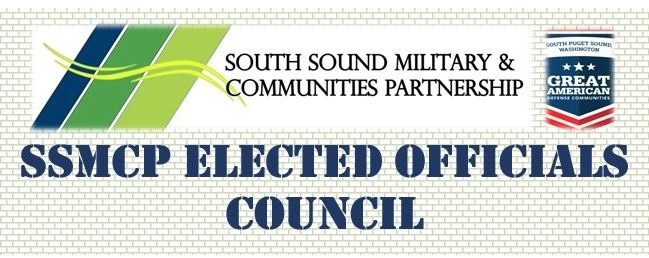
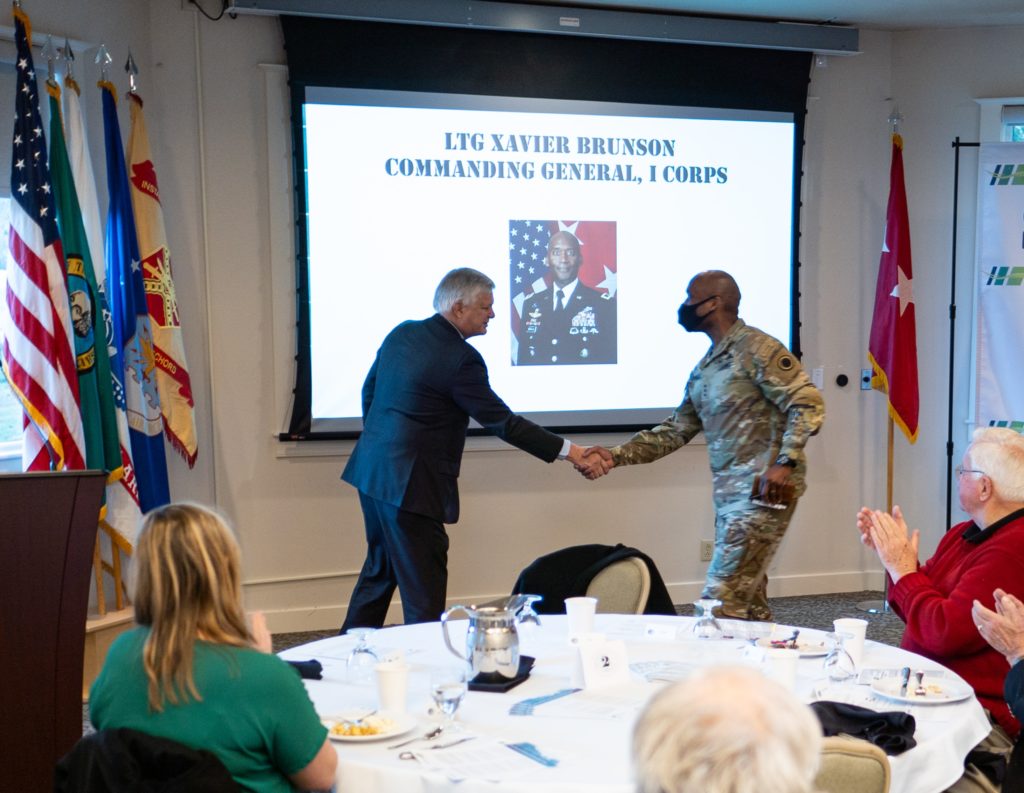
The EOC is a forum for JBLM leadership, council members, mayors, and state legislators to stay connected with SSMCP initiatives.
Our next EOC is 10 November 2022
SSMCP Studies
2020 JBLM OFF BASE HOUSING STUDY
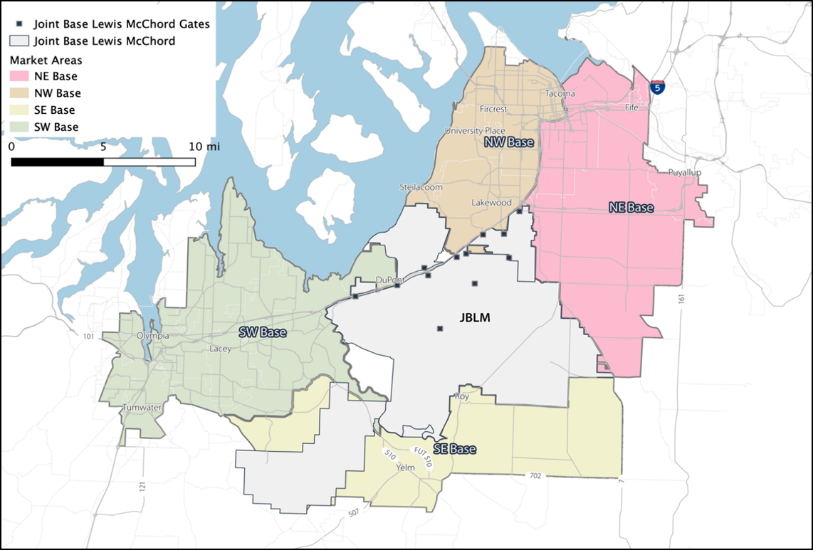
Consultants from AHBL, Lisa Klein and Wayne Carlson briefed the SC on the final findings and recommendations. Affordability is less of an issue for military households. Based on prevailing sales prices and rental rates and the BAH for military personnel, approximately 88% of the total housing stock in the market area is affordable. The key challenge faced by military is finding available housing within a 30-minute drive given the structural supply limitations. Tom Knight stated that JBLM is in the process of realigning resources so that the Rental Partnership Program can be reactivated in the next 45 days. To access the entire study click here.
2015 Joint Land Use Study (JLUS)
Updates
SSMCP & JBLM Need to Hear From You!

JBLM-CAMP MURRAY WORKFORCE SURVEY: Help JBLM and its surrounding communities better meet the needs of the JBLM military community by taking the JBLM-Camp Murray Region Survey. To take the survey, visit https://www.surveymonkey.com/r/577NX6P or use the QR code.
• The anonymous survey asks basic demographic information, and solicits information on housing, child care and other services.
• Open to service members (active-duty, Guard, Reserve), civilian employees, retirees, veterans, spouse or partner of a service members and contractors
• Survey participants will be entered to win Visa Gift Cards ranging from $100 to $500
• Survey runs now through the end of August
• Conducted through a partnership between JBLM and the South Sound Military and Communities Partnership (SSMCP).
For more information about the SSMCP, visit https://ssmcp.org
USGS “Coastal Squeeze” Will Threaten I-5 Along Nisqually River Delta
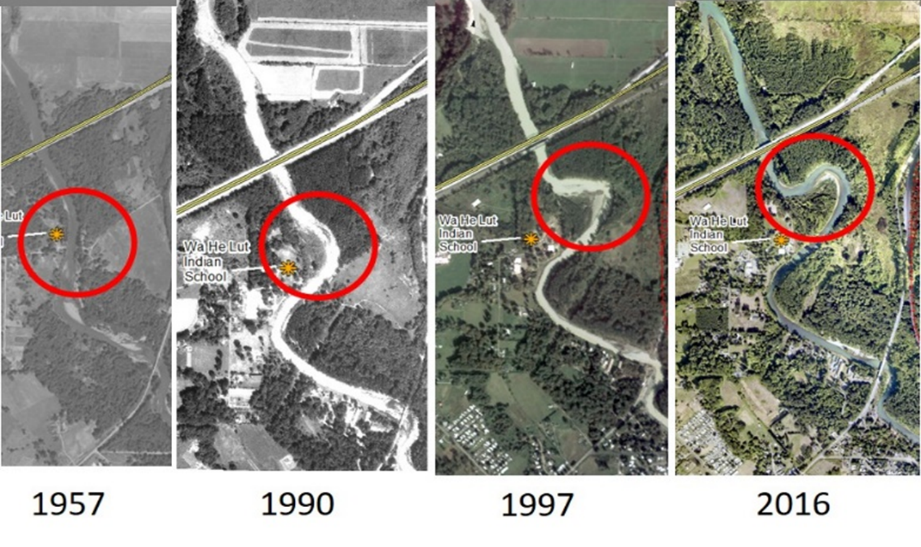
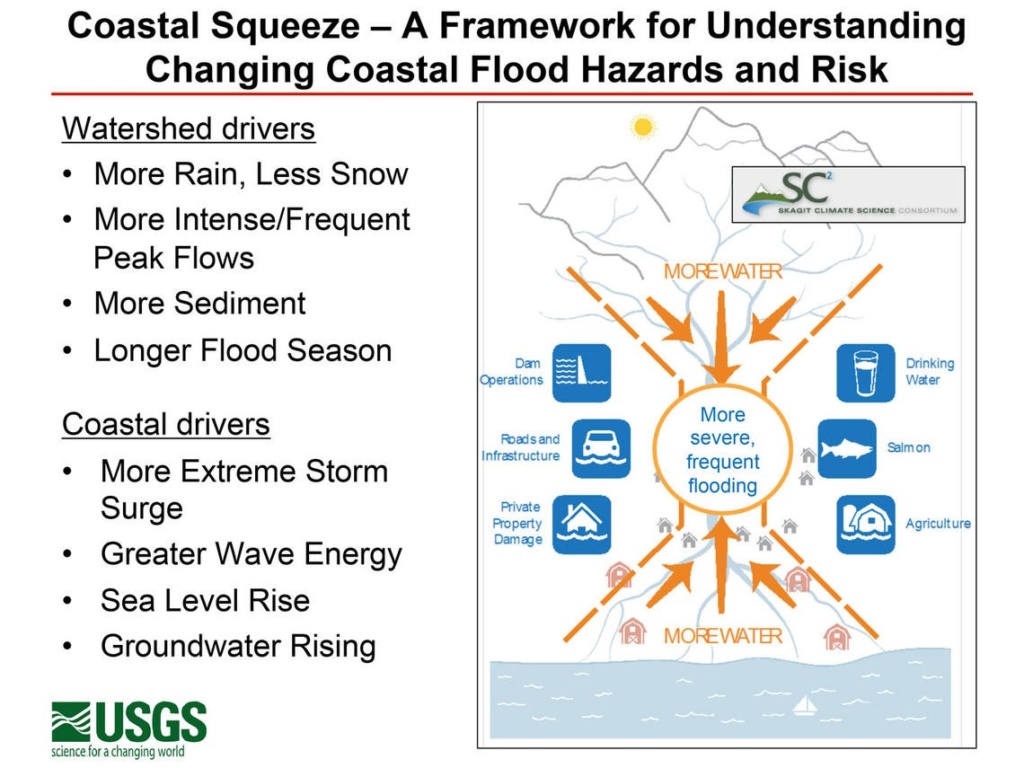
SSMCP believes investing in the I-5 Nisqually corridor should be a legislative priority. Preliminary findings of the USGS hydrologic study find that I-5 will be over topped by Nisqually River flooding. USGS lead scientist, Eric Grossman stated, “it is not if, but when”. The combination of global warming leading to sea level rise, channel reorientation, more prolific rain events, and snow melt will result in the 100-year flood occurring 4-5 times more frequently than historic norms (22-23 year event). The science tells us that in as little as 17 years flooding events will become much more frequent in the Nisqually delta with the ox bow on the Nisqually River reaching the highway. This would result in more frequent events like the 1996 Chehalis flood but on the Nisqually delta.
Please contact South Sound Military & Communities Partnership (SSMCP) Program Director, retired Colonel William Adamson, at 253-983-7772 or badamson@cityoflakewood.us for more information regarding these events and SSMCP initiatives.
SSMCP stakeholders, in order to improve the region’s transportation system performance and protect environmentally sensitive areas, as an initial step, ask $7.5M be allocated toward development of an alternative I-5 highway design. SSMCP asks the Legislature to invest along the Nisqually River Delta to restore impaired ecosystems, mitigate the flood risk to I-5 and increase highway capacity through the corridor.
Transportation Study Presentation
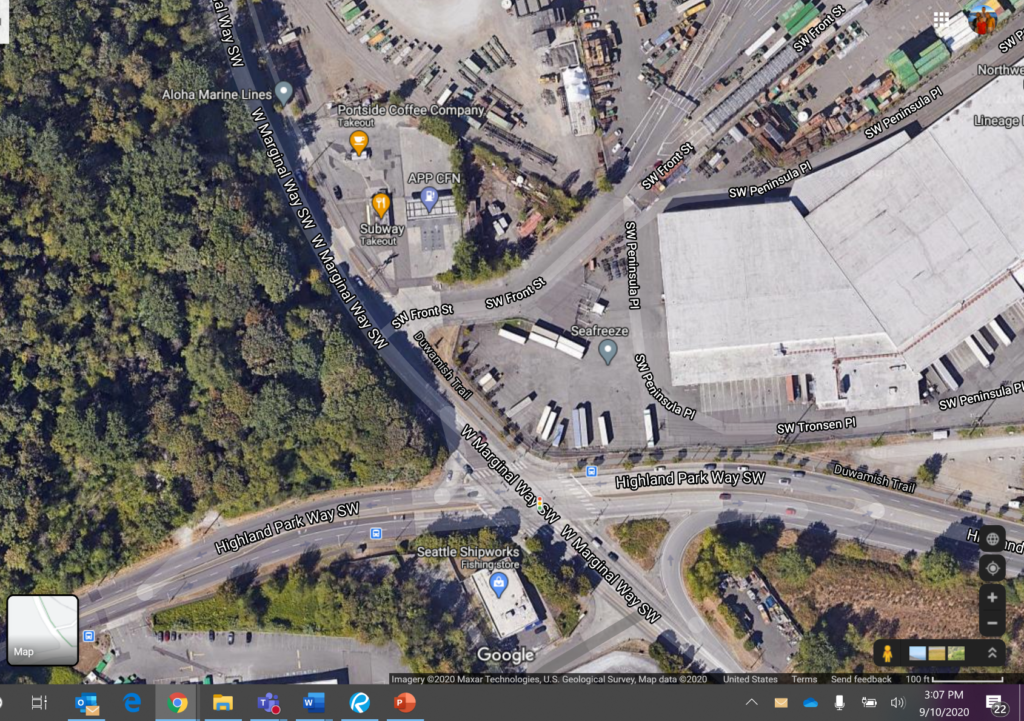
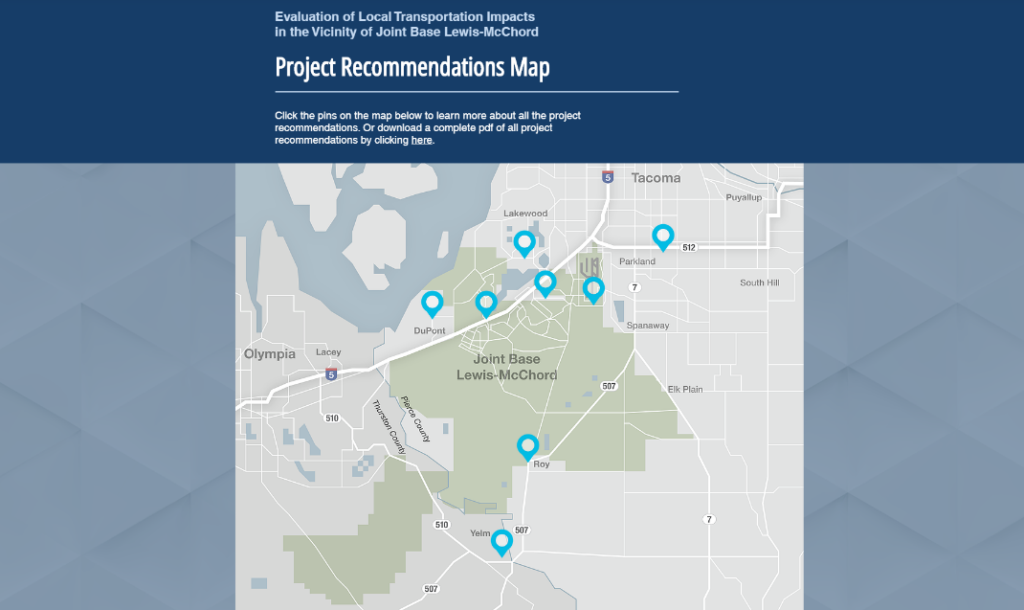
SSMCP recently completed a technical report to identify a prioritized list of arterial street and highway improvements that are focused on enhancing both the mobility and safety of JBLM access. Final findings and recommendations regarding, Evaluation of Local Transportation Impacts in the Vicinity of JBLM.
This project recommends and prioritizes projects, programs, and policies that improve access to JBLM and maintain a safe and reliable transportation system both on and off-base. Report was appreciated and well received with no modifications needed.
The Transport Group and SCJ Alliance team is currently working a concept and feasibility assessment for the exit 120 Main gate “flyover”. Intent is to present this assessment to JBLM staff the end of September. Information on the entire project can be accessed at: https://www.transpogroup.com/jblm or jon.pascal@transpogroup.com
Current Prairie Conservation Efforts Hampered By Lack of Resources
SSMCP recently completed, A Study of Prairie Conservation Partnering, Compensatory Mitigation and Banking Expansion Opportunities In South Puget Sound, WA

This study identifies mechanisms leading to the reduction of adverse impacts on Joint Base Lewis-McChord (JBLM) military training that are associated with the Endangered Species Act (ESA) listing of prairie species, while simultaneously assisting with the recovery of these ESA-listed species.
Based upon extensive South Puget Sound area prairie stakeholder interviews and document research, a strengths, weaknesses, opportunities, and threats (SWOT) analysis was completed, which identifies the factors favorable and unfavorable to achieving a desired future state.
In general, this future state is one whereby Military training use requirements on JBLM prairies and other occupied habitat are met and sufficiently protected habitat and populations exists so as to allow the prairie species to be delisted. The key finding was that current efforts are severely hampered by continual starts and stops due to a lack of dedicated resources.
Recent SSMCP Economic Study Finds JBLM’s economic impact results in 34,000 jobs statewide and 25,500 jobs in the South Sound
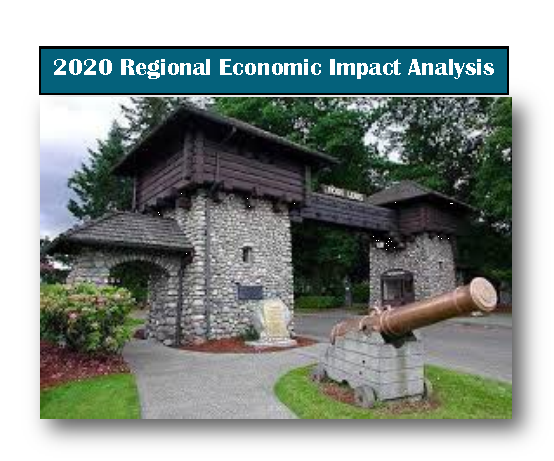
A collaborative partnership between UW Tacoma’s Center for Business Analytics and SSMCP concluded in June. This is the second such study between the two organizations. Due to recent growth at Amazon and Microsoft, Joint Base Lewis-McChord (JBLM) is now the fourth-largest employer in Washington State and an essential driver to the economic momentum of Washington State and the South Sound region.
The previous analysis (completed in 2018) focused on the JBLM military and civilian workforce and their economic impact on the South Sound region. This expanded impact analysis incorporates additional data related to military retirees, working military spouses and education-related spending (Impact Aid, Tuition Assistance, GI Bill funding). Further, this research integrates data from previously unavailable analytic simulations (IMPLAN) that estimate direct, indirect and induced and indirect impacts and incorporates cross-region interactions.
The final impact analysis estimates that, at the state level, JBLM’s presence contributes to nearly 100,000 full-time equivalents (FTEs) who earned nearly $9B in salary/wages to produce almost $14B in gross output that translated into over $2.25 in revenue for federal, state and local governments. In Pierce and Thurston counties, over 83,000 FTEs earned over $8.2B to generate $12.1B in total economic impact and over $2B in tax revenue.
OEA Grant to Fund Reassessment of the 2010 Growth Coordination Plan
SSMCP has applied for a new federal grant from DOD’s Office of Economic Adjustment (OEA). While this grant has only been verbally approved by the OEA director, our OEA Program Manager states he has “high confidence” the funds will be awarded late 1st quarter of the federal fiscal year. The funds provided in this grant ($715K) would allow SSMCP to accomplish the following tasks:
1.) Assess the continued relevance of the strategies and priorities described in the 2010 Growth Coordination Plan
2.) Based on the above assessment, modify SSMCP Work Plan priorities
3.) Update the current 2010 GCP by developing a new 2021 Growth Coordination Plan
Read the entire 2010 Growth Coordination Plan here.
Pierce County TV on JBLM impact to the region
JBLM is a Regional Economic Center. The next phase of the Regional Economic Impact Analysis begins soon. Contact Program Director Bill Adamson to participate at badamson@cityoflakewood.us or 253-983-7772.
Capital Budget: Encroachment in the McChord North Clear Zone
Resolving encroachment is a shared responsibility between Federal, State, and local authorities. SSMCP continues to coordinate with DOD for long term federal funding to resolve Clear Zone encroachment – roughly $60 million.
The 2019 state capital budget includes $500,000 to go towards resolving the McChord North Clear Zone (NCZ) land incompatibility and public safety issue.
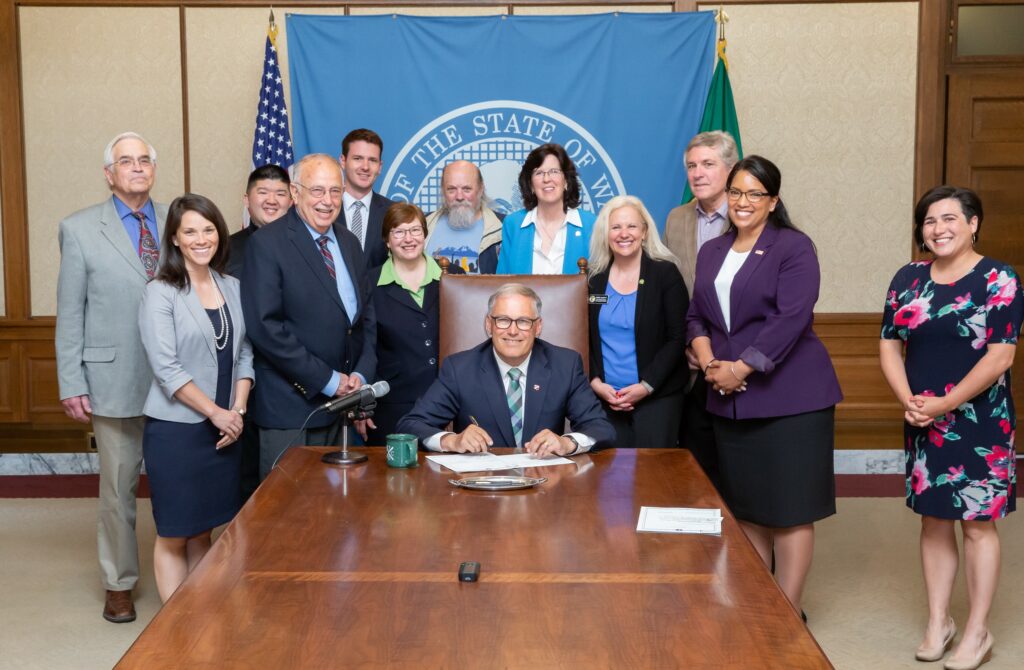
State Senate Bill 5748 passed with SSCMP plans the fund will assist with further addressing the NCZ. The newly established Defense Community Compatibility Account approved by Governor Jay Inslee will help the state leverage federal dollars and fund high priority military infrastructure projects identified by local communities.
Transportation Budget: I-5 Corridor from Mounts Road to Tumwater
The 2018 Supplemental Transportation Budget included $550,000 for implementation of a corridor study to identify potential improvements between exit 116 and exit 99 of Interstate 5. WSDOT, the Nisqually Indian Tribe, and Thurston Regional Planning Council leveraged the initial investment into $2 million worth of planning work scheduled for completion in July 2019.
Additionally, $2.25 million towards a necessary NEPA/SEPA review of mid- and long-term actions was included in the 2019 capital budget.
SSMCP Policy Positions
Maintain Active State support for Military Affairs in Washington
SSMCP believes in a strong commitment from the State in support of military affairs. This support should include:
- Full funding of the Washington Military Alliance (WMA) with direct reporting to the Governor, in recognition of the economic benefit realized by the State and private sectors due to our military’s presence. WMA works to retain and expand military missions in Washington State, thereby increasing defense spending and investment in our state. The current regional economic impact from JBLM alone is between $8.3 and $9.2 billion annually.
- Passing legislation to establish a Military Benefit Zone economic development tool for communities surrounding major military installations to use toward infrastructure improvements.
- Increasing access to quality affordable child care for all WA residents, including service members, veterans, and their families.
- Supporting the Washington State Arts Commission in Healing Arts efforts focused on Active Duty Military and Veterans.
Support Military & Civilian Compatible Land Use
SSMCP was founded on and strongly agrees that collaborative partnerships are vital in identifying and resolving existing land use conflicts and preventing potential future land use conflicts. SSMCP supports joint land use strategies that do not usurp local control. Specifically, SSMCP supports:
- Allocating state resources to assist with resolution of compatible use issues through the establishment of a military base land use compatibility grant program and/or direct appropriations from the state’s capital budget
- Designating military installations as regional centers for the purposes of regional and transportation planning
- Coordination with and investment in military-community organizations such as SSMCP, Forward Fairchild, KEDA, Greater Spokane, Inc., etc.
Support Partner Projects in the Region
These projects include but are not limited to:
- Widening of DuPont/ Steilacoom Road from Integrity Gate to Exit 119 on I-5
- Addressing the at grade rail crossing near the JBLM main gate entrance at Exit 120
- Timely completion of the already funded SR 510 Yelm Loop
- Support the capital budget request for the Lacey Veterans Services Hub.
2019 SSMCP Membership Survey Results
2018 JBLM Workforce Survey Results
SSMCP collaborated with partners to create the 2018 JBLM/Camp Murray Regional Survey to gain insight on aspects of demographics, statistics and perceptions of Active Duty, Reserve, Guard and civilian personnel.
The South Sound Military & Communities Partnership earlier this year surveyed nearly 3,100 residents who are active-duty military, Reserve, National Guard, Department of Defense civilian employees and veterans to gauge their impressions of the South Sound.
Initial findings show that personnel assigned to or are involved with Joint Base Lewis-McChord and Camp Murray love the area for its quality of life.
Since 2011, SSMCP surveys of JBLM/Camp Murray employees and local communities continue to reveal valuable information for community leaders and JBLM officials. Survey results over the past five years indicate that the communities surrounding JBLM have formed symbiotic relationships with the military installation. Either would struggle without the other. While JBLM is an interdependent economic component of the South Puget Sound, it is intrinsically linked to the communities and commerce of the region.
Most communities in the South Sound have a large number of JBLM employees forming a JBLM-centric, communities cluster. JBLM’s economic impact on Washington State (No. 2 employer in WA) and the South Puget Sound region (No. 1 employer in Pierce County) highlight the need for critical military-community support for JBLM. In addition to the economic value of JBLM, its employees create demands on community-based social systems such as: housing, social services, public education, healthcare, transportation, and business development. This year’s survey touches on all these social systems gathering data from a wider range of participants than in previous surveys.
The analysis for past surveys centered solely on active duty Service Members. SSMCP Stakeholders wanted to track trends in living locations for JBLM employees across the region. SSMCP broadened the scope of this year’s survey to all JBLM employees. DOD civilians and contractors make-up a large percentage of the permanent JBLM workforce and tend to remain in the South Sound region longer than active duty military. Data for the survey was collected between May and June 2016. There were 3,061 respondents to the 2016 survey.
Past surveys found on average 70-72 percent of Active Duty respondents lived off JBLM. The responses regarding home ownership or renting are a reversal from the last survey in 2013 when 60 percent rented and 40 percent owned their home. This year 60 percent own and 40 percent rent and 87.5 percent live off-base. Survey results reveal some of the reasons why housing choice follows this pattern.
Off-base housing choice may also contribute to the continued negative perceptions about JBLM traffic congestion. The No. 1 complaint for those living in the South Sound is traffic congestion with 65 percent of respondents noting this as the major negative factor.
Other Fast Facts:
- Nearly 80 percent feel the education system provides adequate education to children in contrast with 2013 findings which revealed a higher 90 percent satisfaction rate.
- AAFES retail shopping appears to be in a rapid decline over the past 3 years.
- The two most heavily used gates, Madigan and Steilacoom-DuPont, account for 40 percent of the traffic entering JBLM.
- This year, 59 percent of active duty respondents plan to transition to civilian careers opposed to the 2013 findings that 30 percent were planning to transition out of military service.
2016 JBLM Camp Murray Regional Survey Exec Summary
2015 Community & Business Survey
SSMCP is directing its information gathering outside of the borders of the military base this year with the SSMCP Community & Business Survey. SSMCP will partner with a consulting firm to gather useful business and community information on interactions with, and perceptions of, military presence in the South Sound. See the Results.
Joint Land Use Study
Between 2013 and 2015, the SSMCP coordinated the development of a Joint Land Use Study (JLUS) for Joint Base Lewis-McChord (JBLM.) Learn More
JBLM 2015 AICUZ Study The AICUZ study provides an analysis of the operational noise footprint, aircraft accident potential zones (APZs), hazards to aircraft flight, and land use development surrounding JBLM. AICUZ studies identify land use-related concerns and contains recommendations for compatible development.
Working Groups
The SSMCP staffs several Working Groups comprised of regional stakeholders and subject matter experts tasked to (1) Assess the continuing relevance of the 2010 GCP recommendations and (2) Make recommendations to the Steering Committee for ongoing implementation and coordination. Current groups include Healthcare, Social Services, Education, Transportation and Business & Economic Development.
